
Decades ago, celebrating in the end zone wasn’t an illegal offense. Players crossing that final yard line regularly danced, gyrated and cartwheeled in elation before their felled opponents. Today, a whole generation of football players and fans have been raised thinking that such behavior is the height of bad sportsmanship. So when Kawasaki announced the arriving Ultra 300X’s output had increased to 310, many considered it akin to spiking the football.
Kawasaki already led the industry with a significant gap in horsepower over its competition. With nearly 80-horsepower over Yamaha and 40-plus over Sea-Doo, the Big K really didn’t have much to worry about in the “numbers race.”
Moreover, the podiums of every single offshore championship featured nothing but Ultra 300Xs in 2013. Even last year’s Pro Stock Runabout class champion of the UWP-IJSBA Watercross Tour was a 300X, besting both Sea-Doo and Yamaha’s close course darlings.
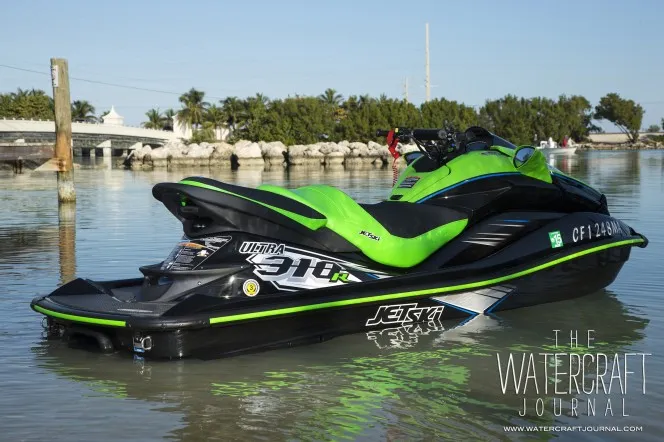

Building off of the renowned Ultra platform – first introduced (in this form) in 2007 as the 250X and the later-redesigned 300X in 2011 – the 310 series benefits from nearly a decade of race course dominance, as well as consumer class leading stability, storage and thrilling performance. That’s quite the résumé. So why wouldn’t Kawasaki leave well enough alone and refocus its efforts on something else?
Let me begin by saying that the extra 10-horsepower was a byproduct. “Gaining more horsepower was never the goal,” Kawasaki’s Bret Snider explained. “We managed to free up the extra power by making major improvements in the engine’s efficiency.”
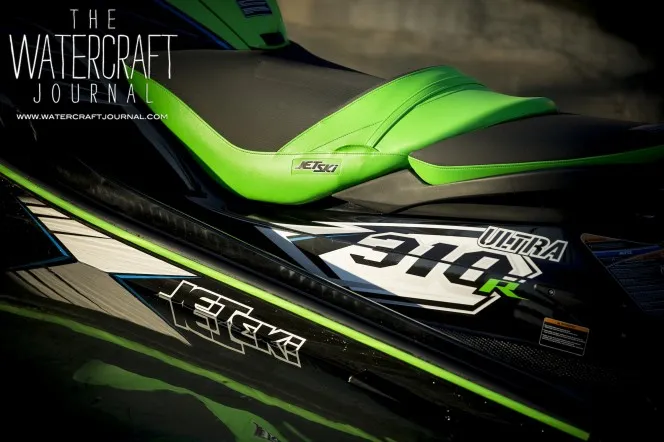

The 1,498cc, liquid-cooled inline four-cylinder plant spins out an industry-leading 310-horsepower thanks to drastically improving engine oiling, reducing heat soak and maintaining constant lower internal engine temperatures throughout the engine’s linear powerband. This was first achieved by re-engineering the crankcase with thicker water jackets, larger oiling passages for quicker oil return to the redesigned baffled pan that reduces oil windage and sloshing, and dual under-piston cooling oil jets (increased from one jet per piston to two).
Speaking of the pistons, the new Ultra 310 gets new lightweight cast slugs featuring additional ring land V-grooves.
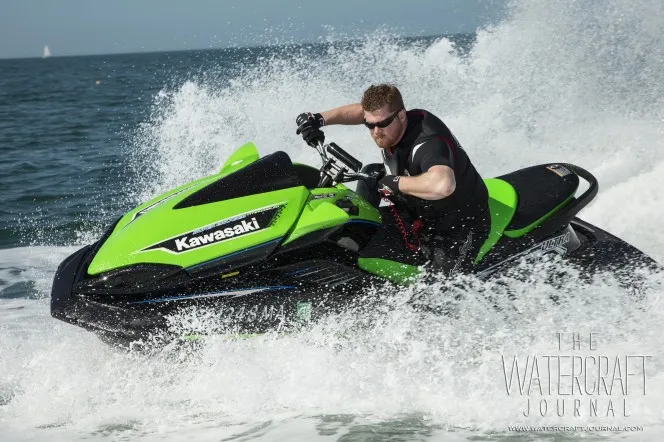

Kawasaki bumped up to a larger capacity fuel pump for improved fuel flow volume and 500cc injectors spraying into a brand-new long-runner intake manifold. Made from heat-resistant plastic, the intake radically improves low-to-mid range power.
Fed by the same Eaton TVS constant-displacement, four-lobe supercharger as last year, the Ultra touts dual blow-off valves to siphon off any extra of its 17psi of boost when needed. The previous model’s liquid-cooled intercooler returns as well. But what isn’t mentioned is the return of the second waterbox. The original 250X touted dual waterboxes but was reduced to one for the 260X and 300X. The second muffler not only drops the decibel output, but also addresses the previous Ultra’s troublesome low speed list while turning.
In fact, much of the aforementioned improvements came after studiously addressing consumers’ and technicians’ most reported issues with prior models.
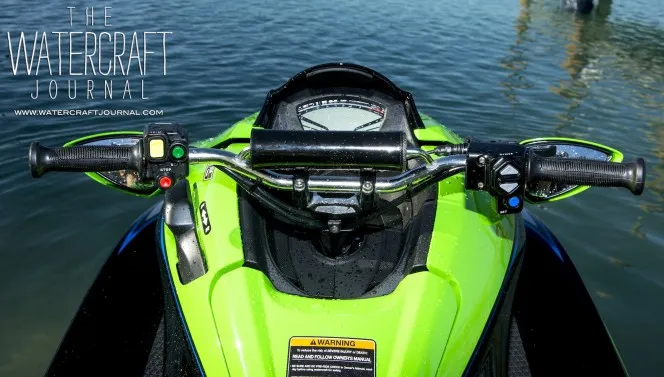

Overheating, burning and scavenging for oil, and even fuel over-consumption were mitigated with the above revisions. Even the large oil breather/catch can and articulated sprung belt tensioner are OE-level solutions first developed by the aftermarket. The large 160mm 8-vane pump also benefits from a repitched 3-blade, long-snout prop – also very similar to what tuners and racers use.
But all of these improvements are found across all of the 310 models, X, X SE, R and LX. What makes the 310R stand out among the rest? Well, if there was ever a personal watercraft that was specifically tailored to fit me – and lot of you who think like me – it would be the 2014 Kawasaki Ultra 310R.
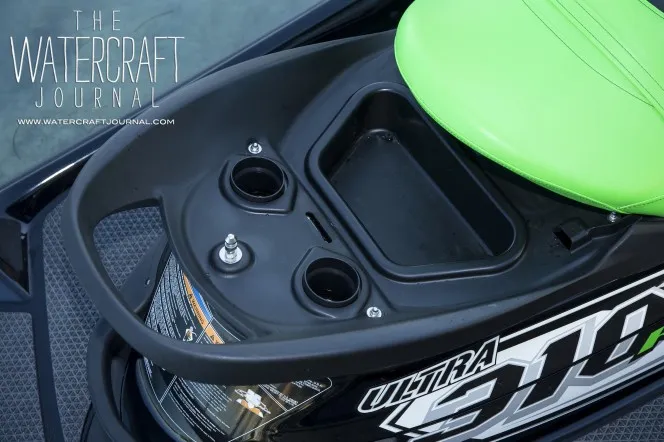
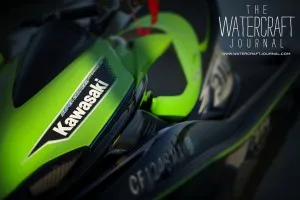
It’s everything I would have ever wanted from the previous model – the seemingly unstoppable Ultra 300X. The Ultra 310R is the project ski I didn’t have to build. It’s got 99.9-percent of all the mods I would see myself bolting on a Saturday morning before giving it a right good flogging the next day.
The 310R gains Kawasaki’s new Sportseat, wrapped in grippy textured canvas and a deep-grooved Hydro-Turf traction mat kit. Replacing the plastic tilt steering is a fixed electro-polished stainless steel steering neck and race-grade MX-style handlebars. These of course, can be adjusted fore and aft by loosening the hex head bolts with an Allen wrench.

On the water, the 2014 Ultra 310R pulls with rotator cuff-tearing force. The Lincoln Tunnel-sized pump bites hard and remains loaded even while streaking over 2-to-3 foot Gulf Coastal chop. The fly-by-wire throttle response is immediate, almost precognitive. At speed, the supercharger whistles like a near-passing bullet. There’s no chatter of loose plastic or rattling, proof of superb fit and finish.
I did note some definite reaction lag in the electronically-assisted trim control toggle. Like the Cruise Control button, bumping the trim up or down requires holding down it one or two beats for it to respond – which is difficult to manage while under throttle.
Apart from these little quibbles, the Ultra 310R – and all of the 310-powered Ultras – adds up to quite literally the best runabout that Kawasaki has produced in its 40 years. And Kawasaki’s 310R is the Ultra that guys like you and me have been waiting for.






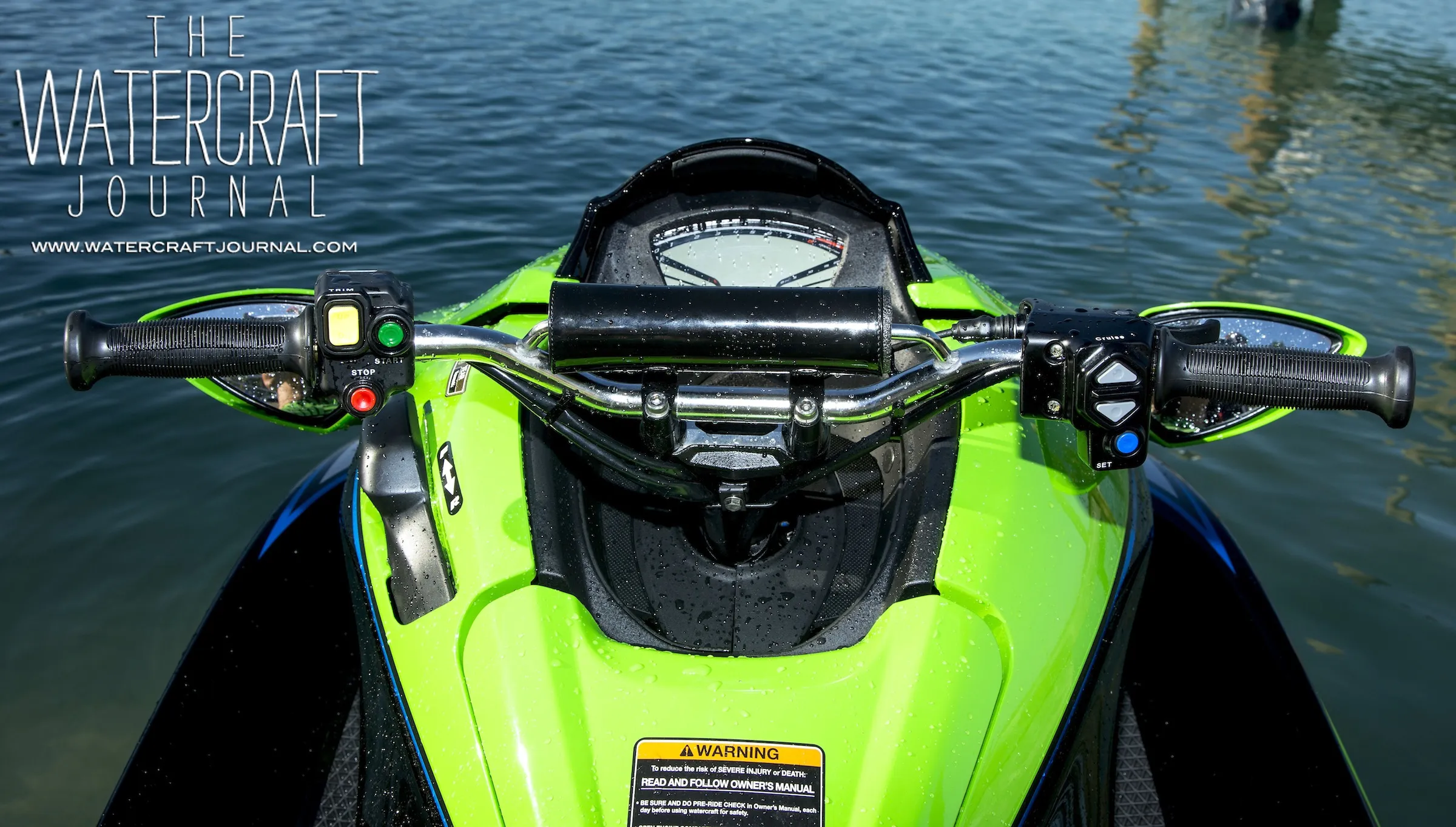
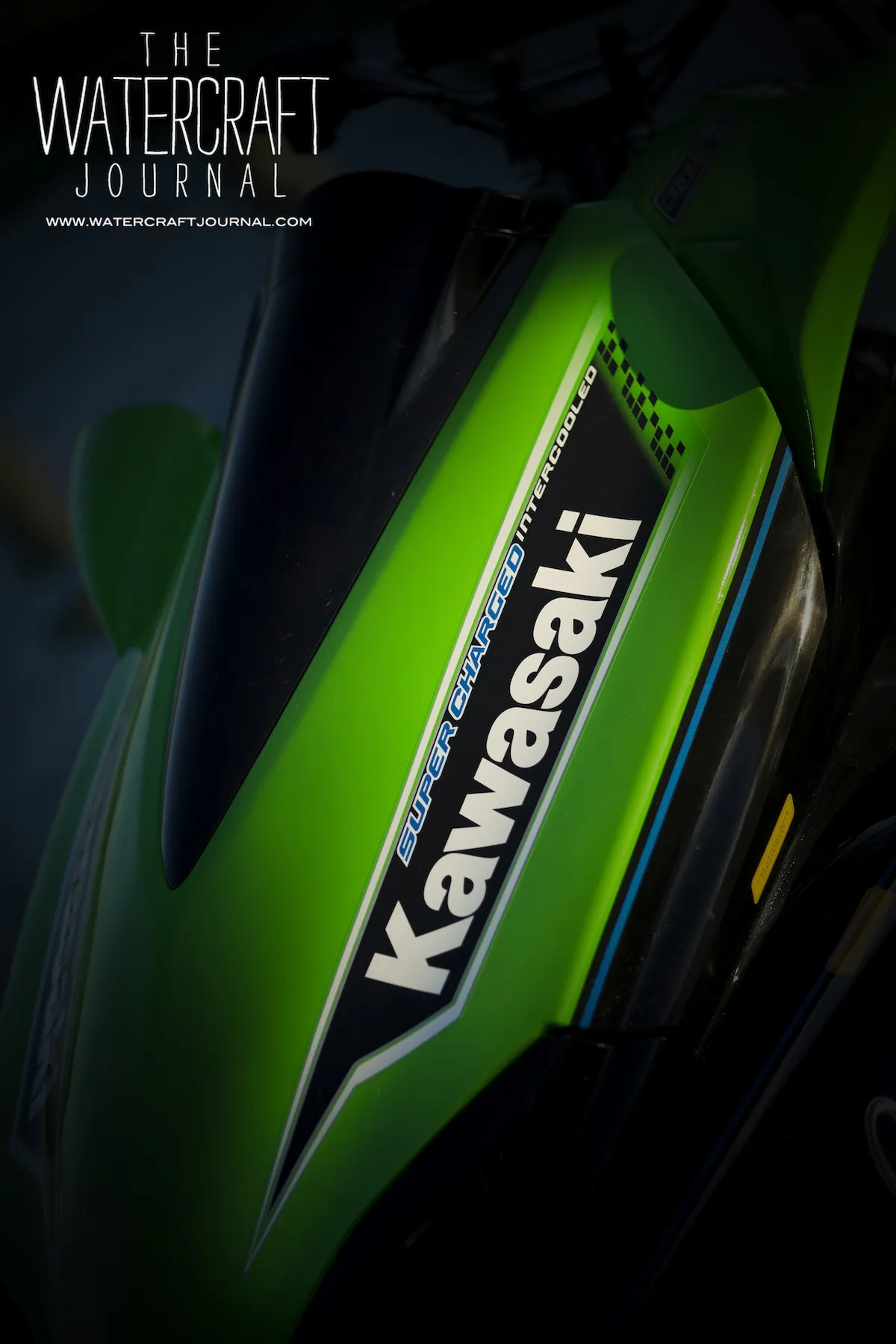
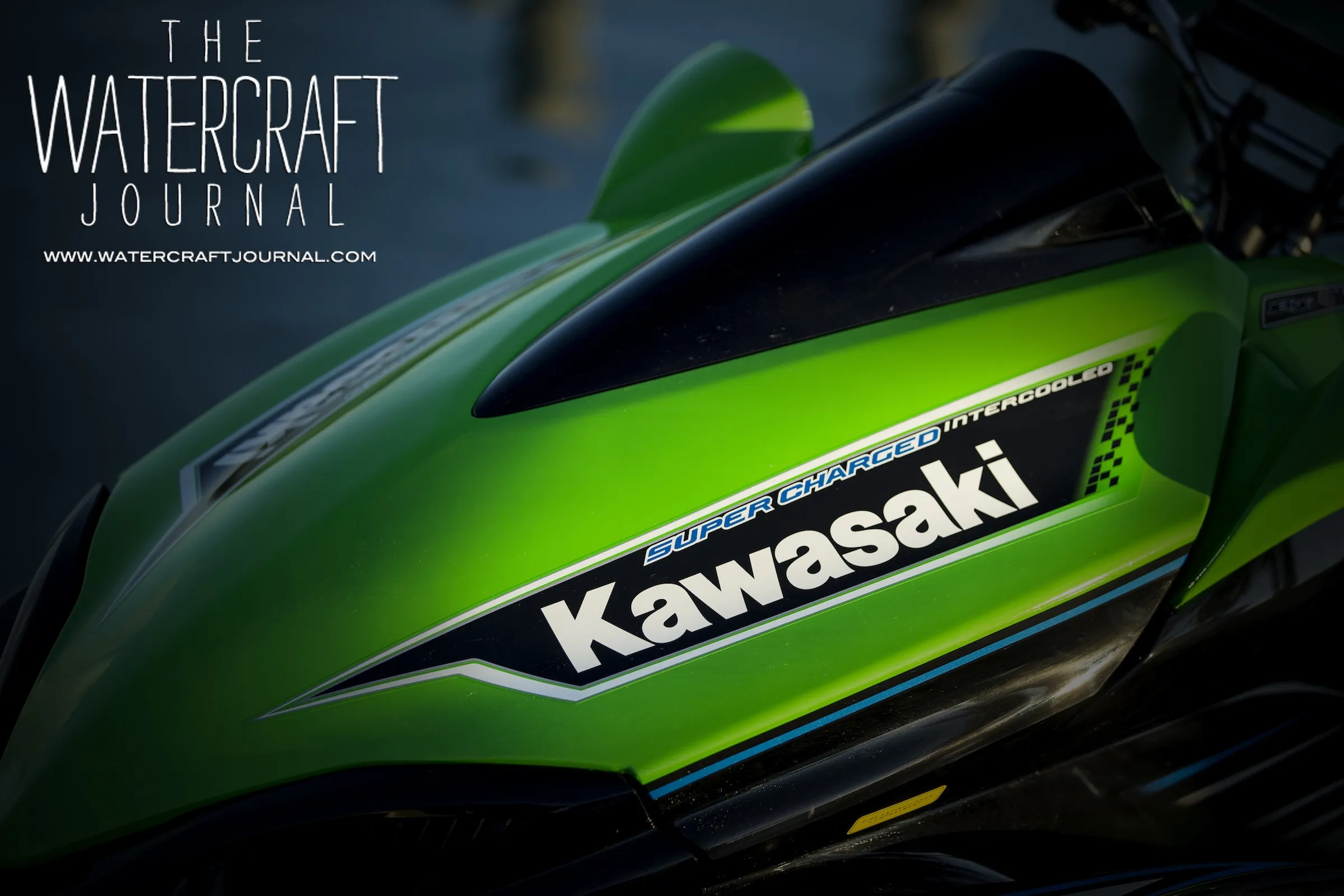
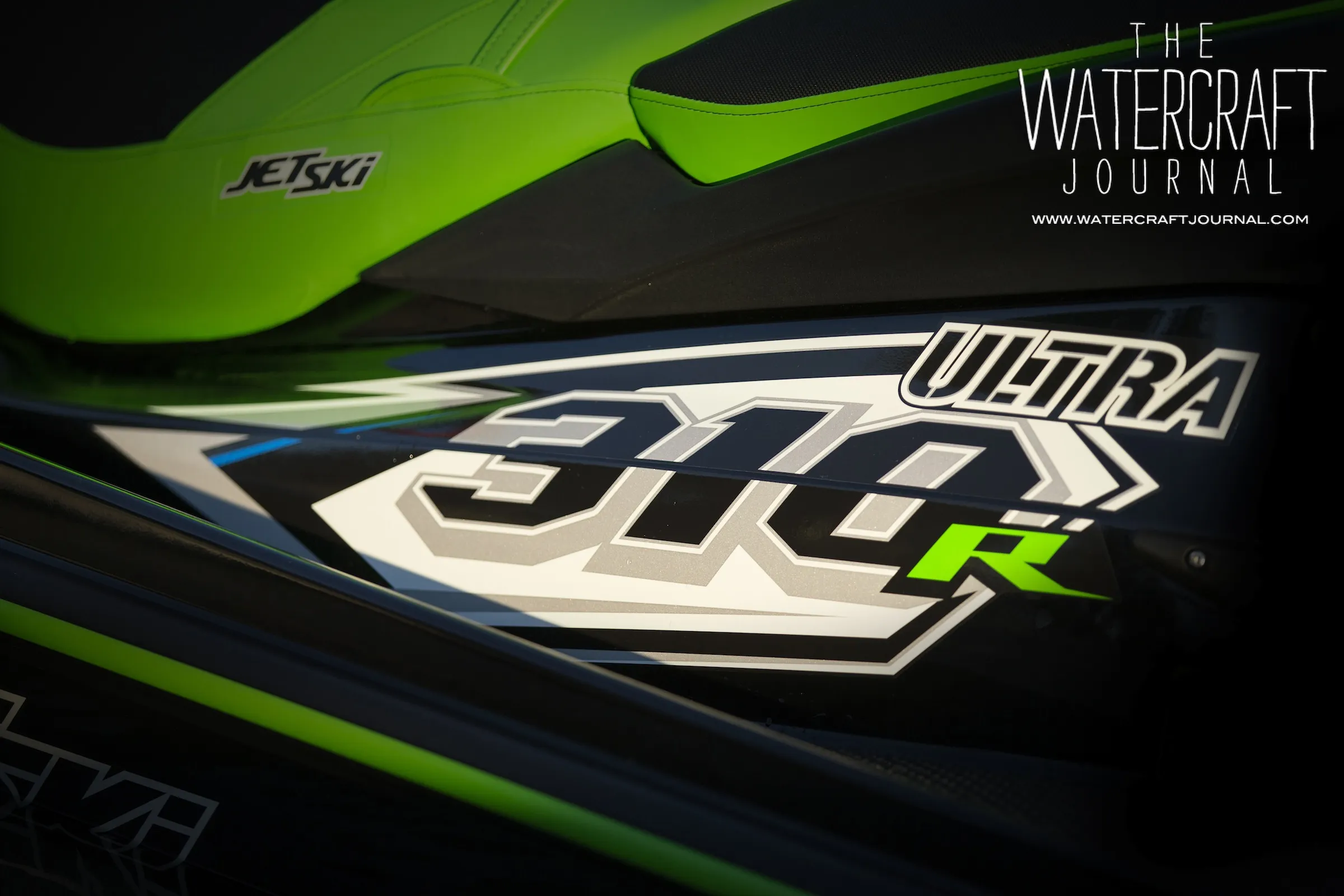
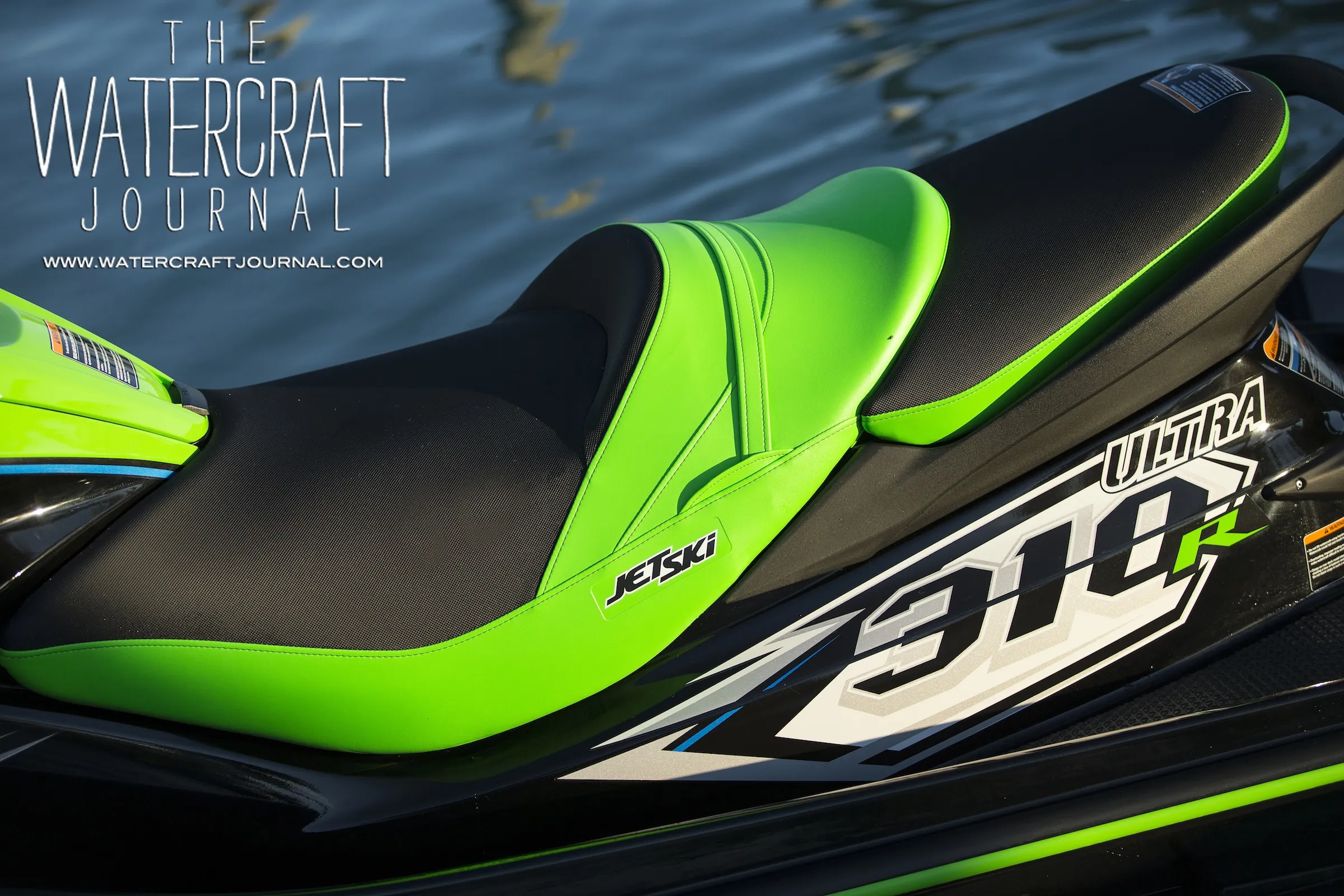
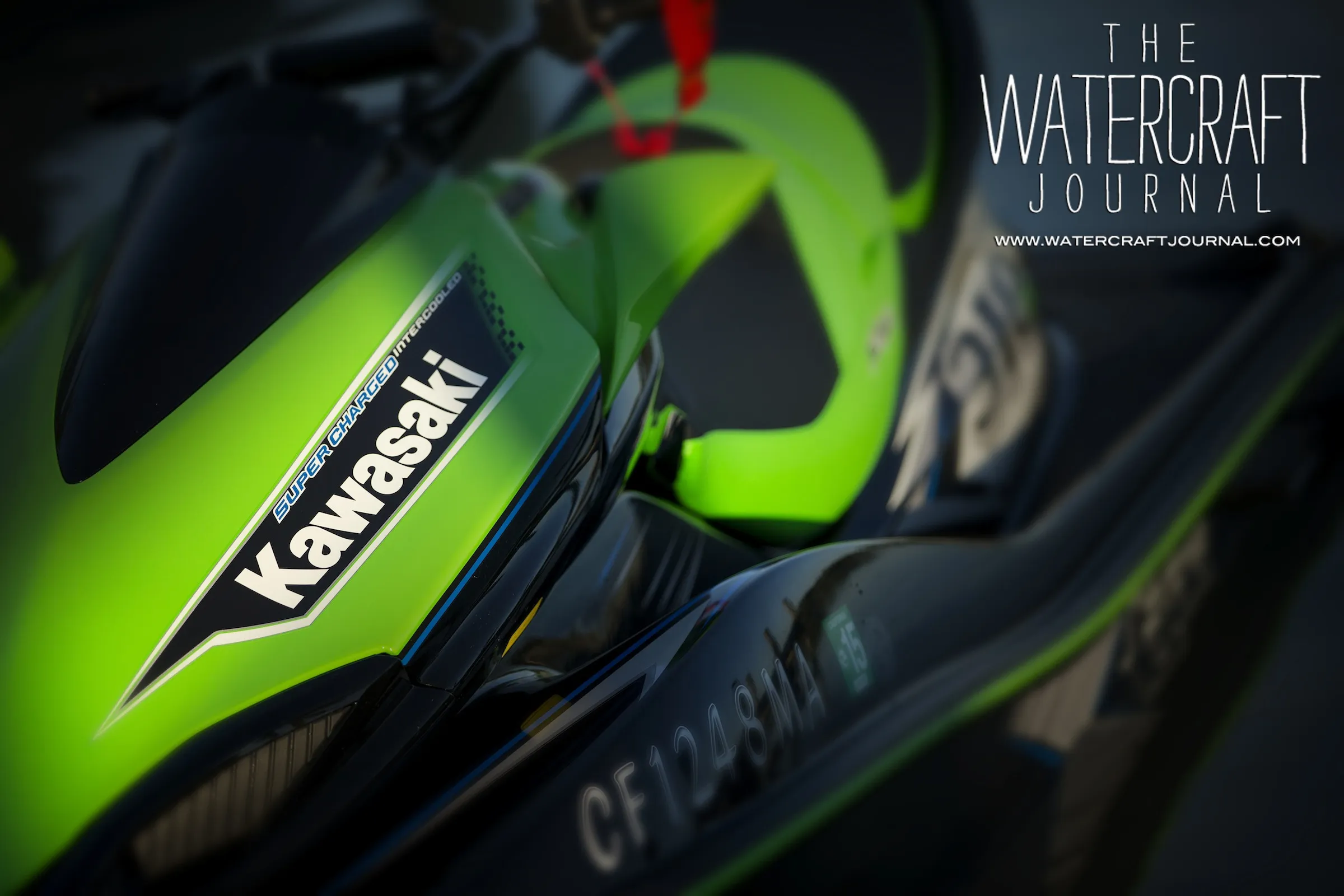
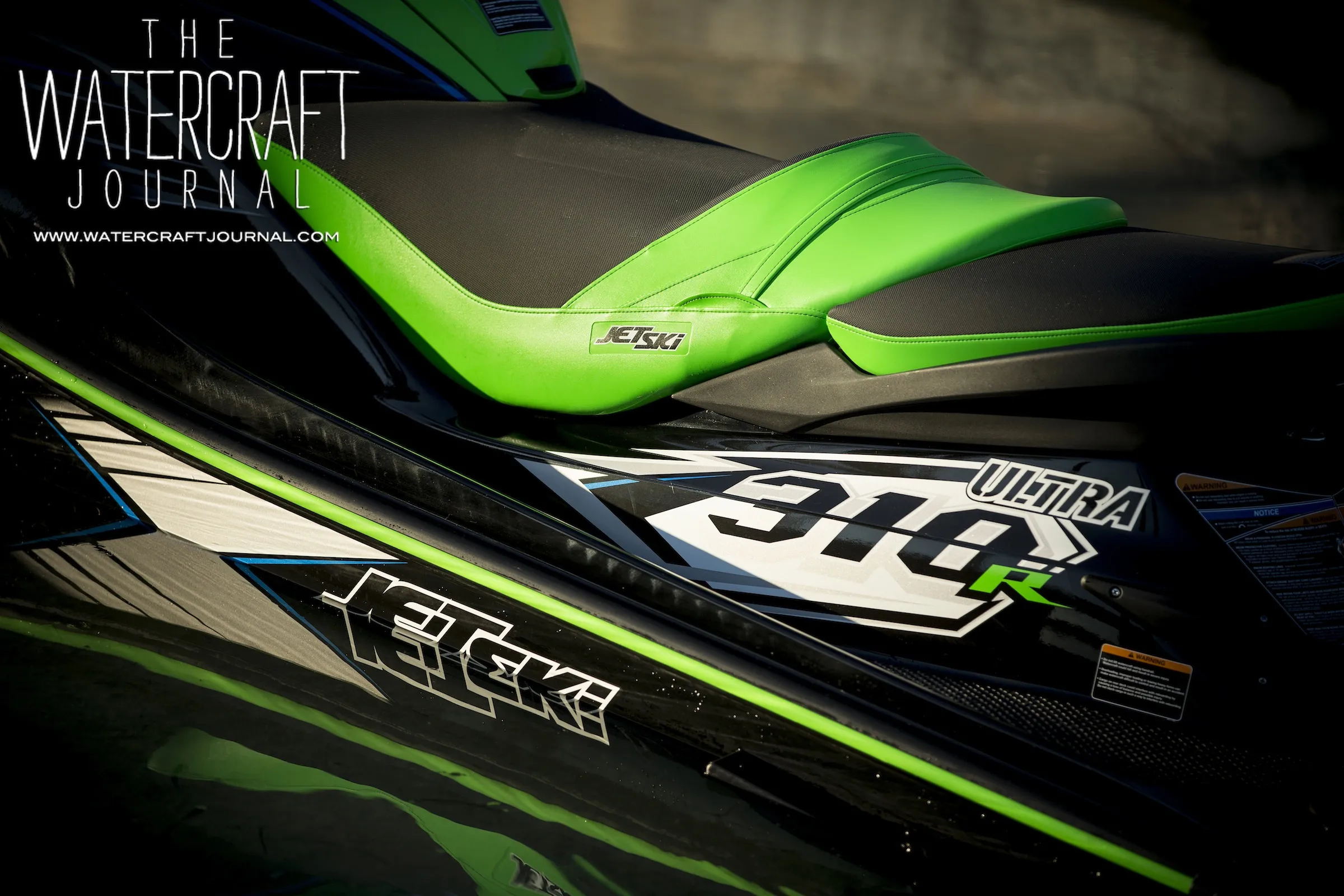
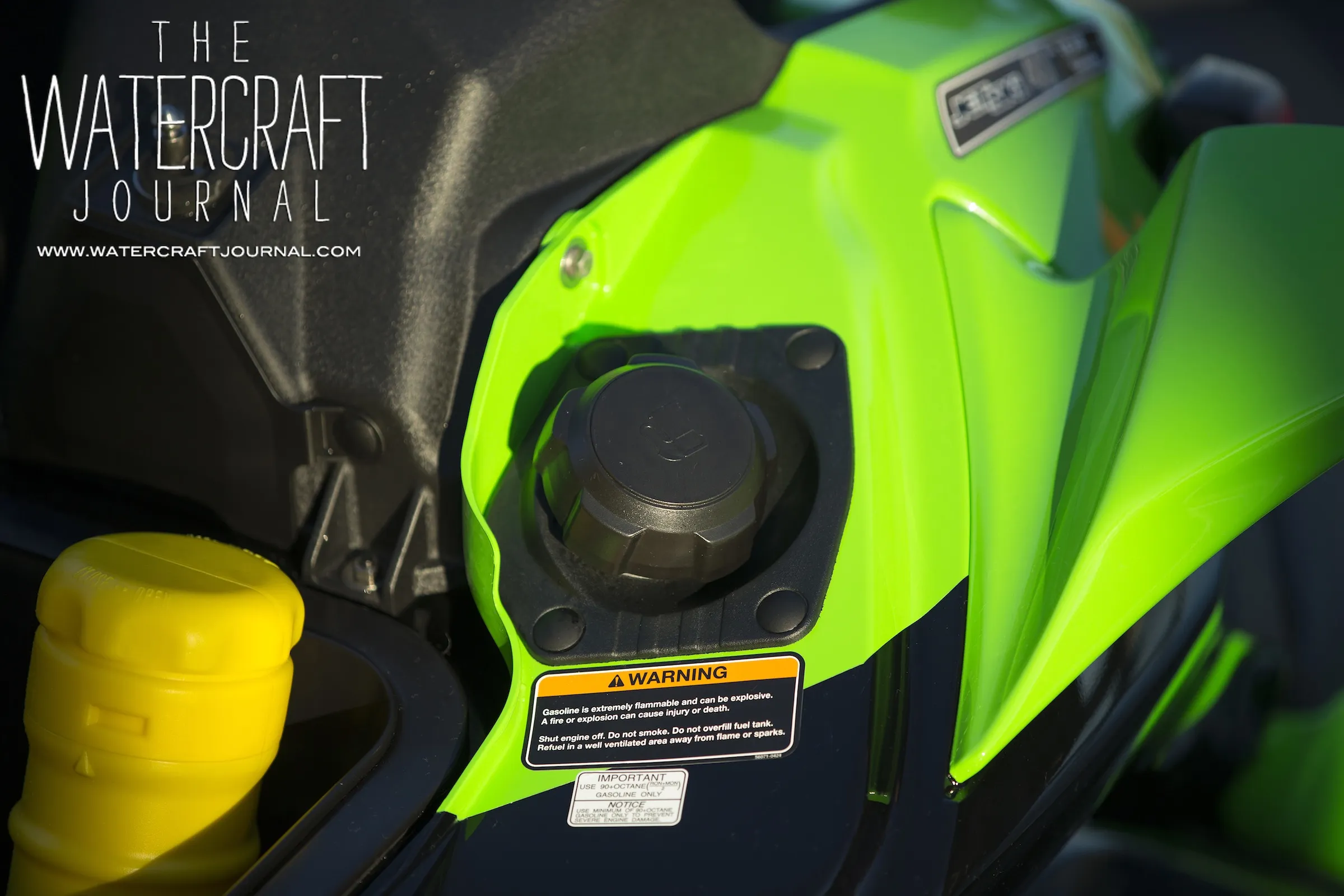
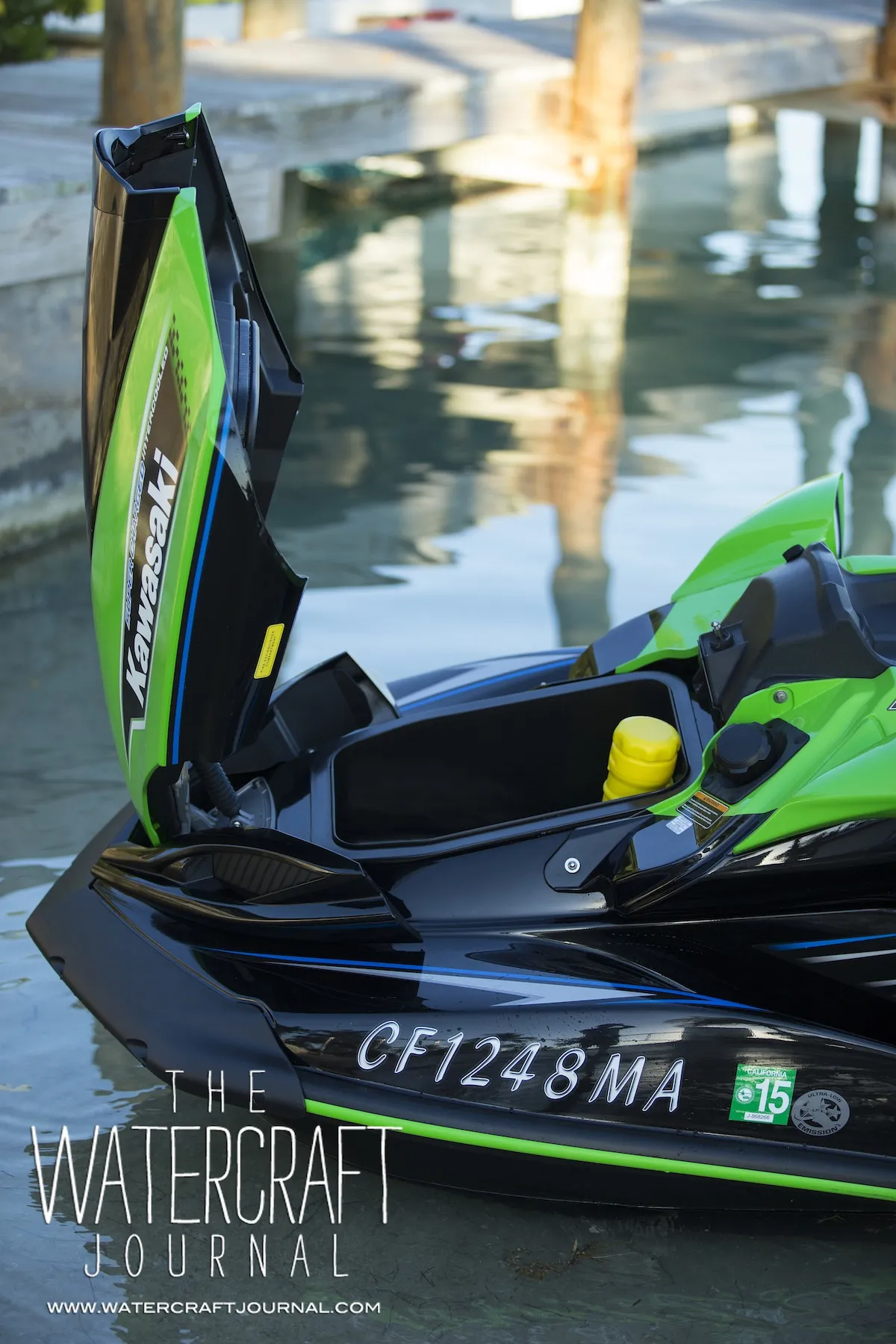
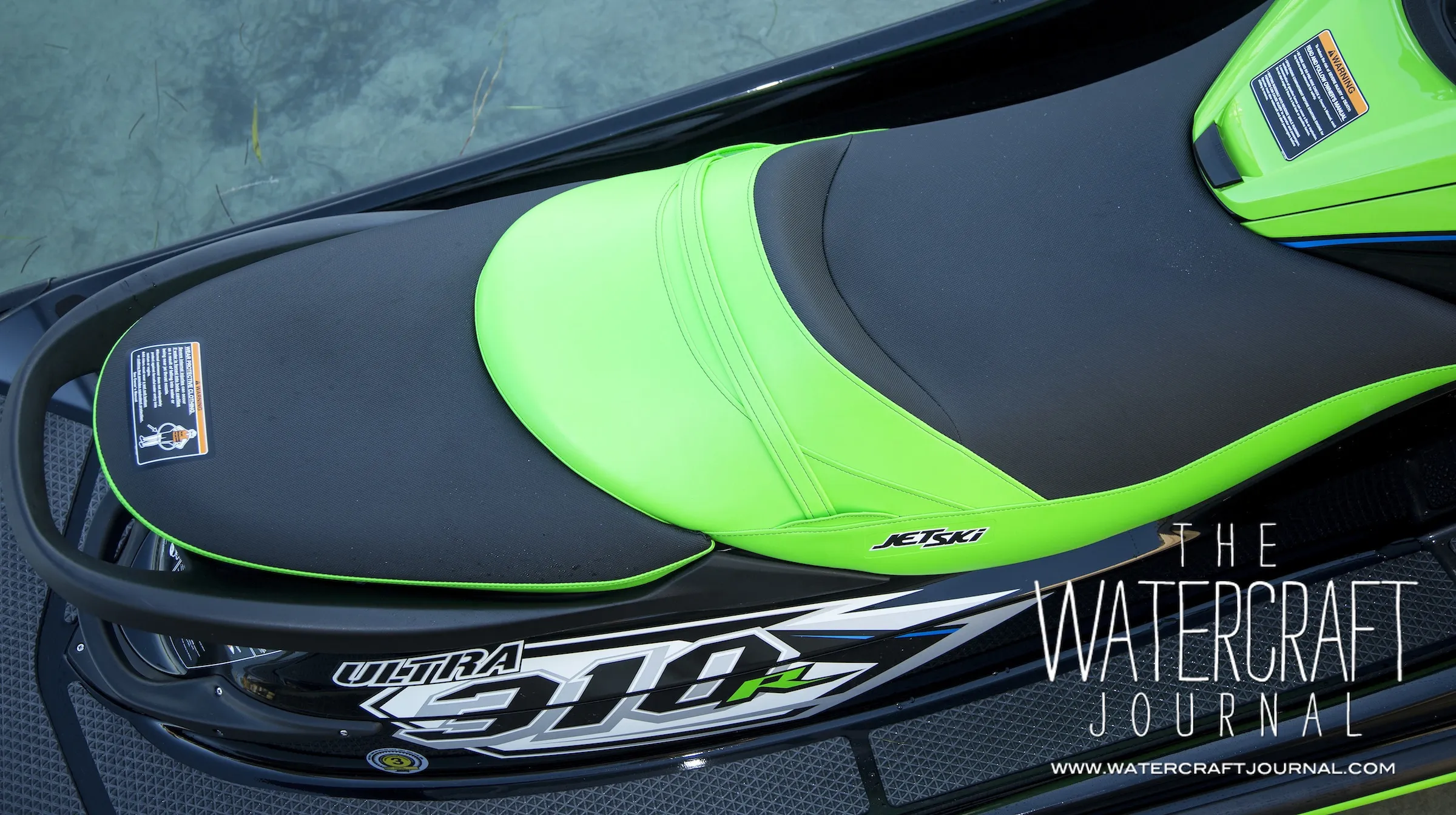
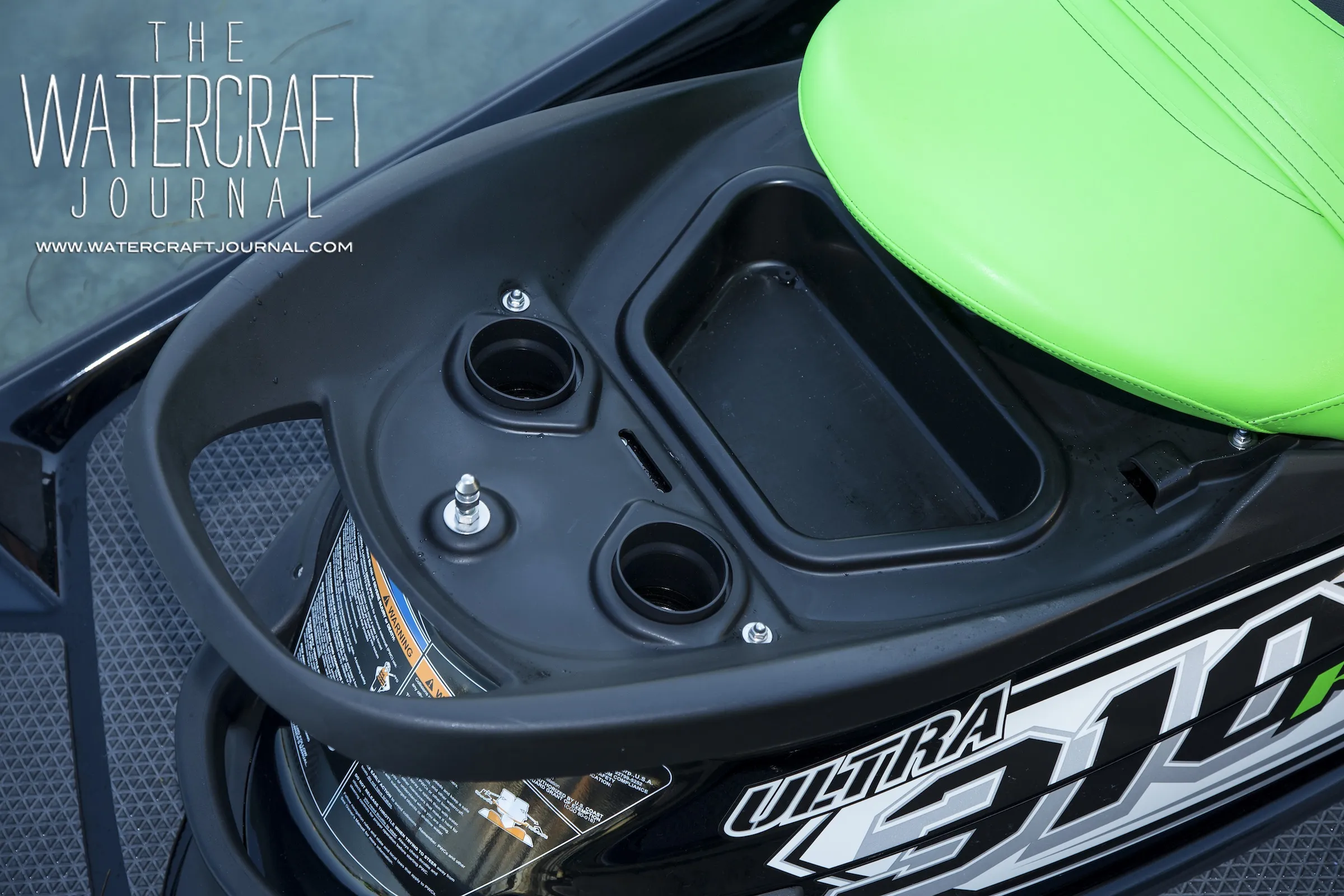
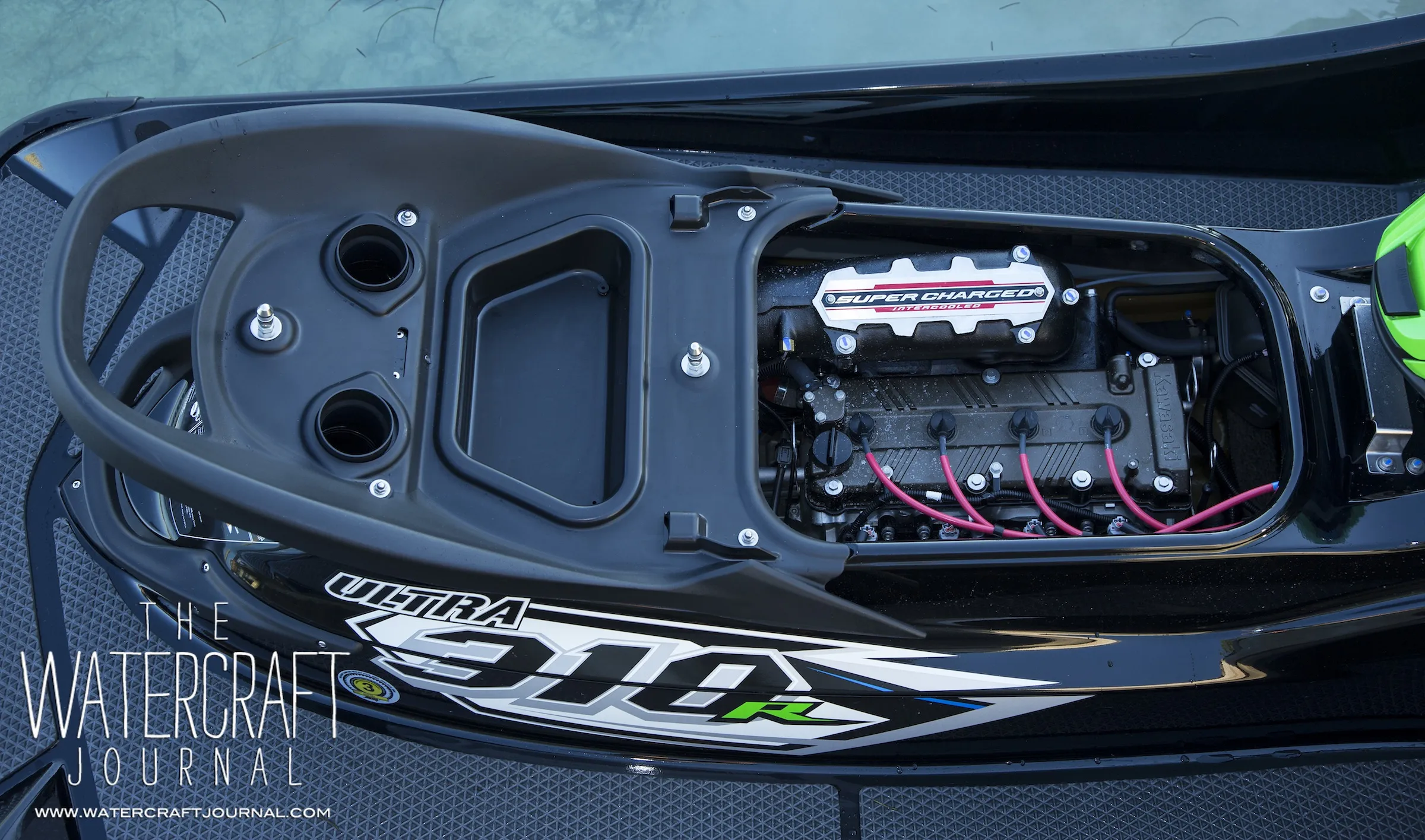
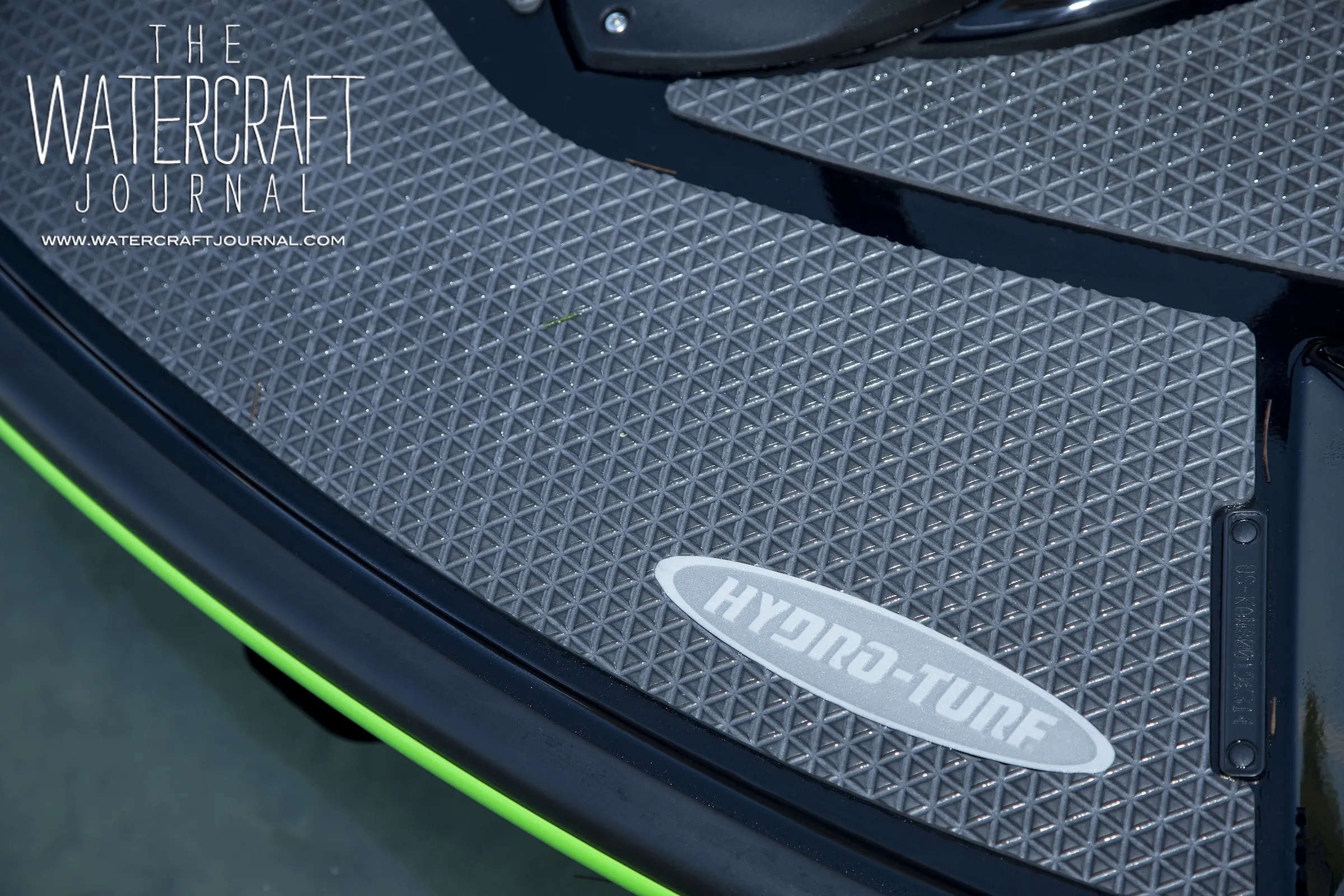
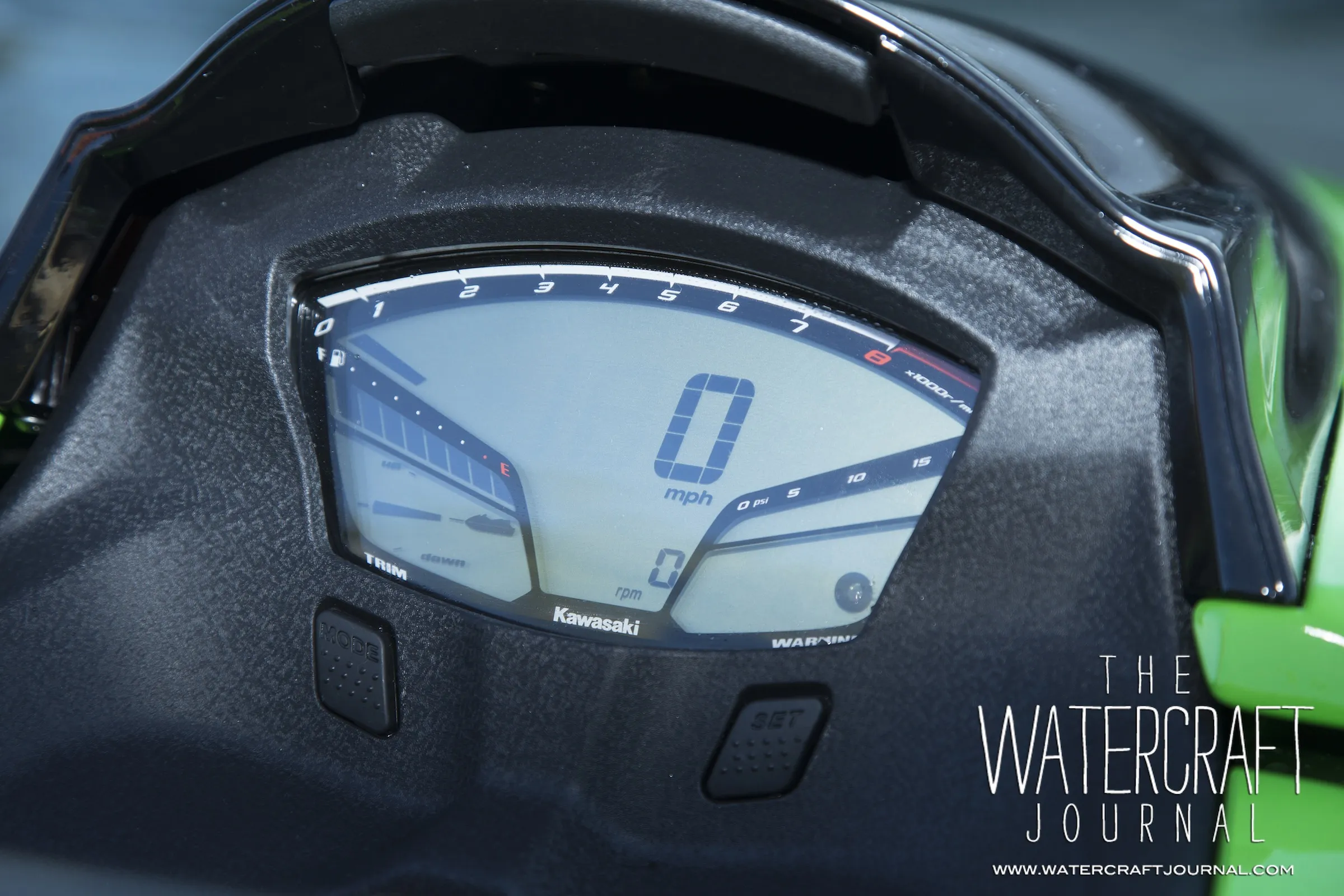

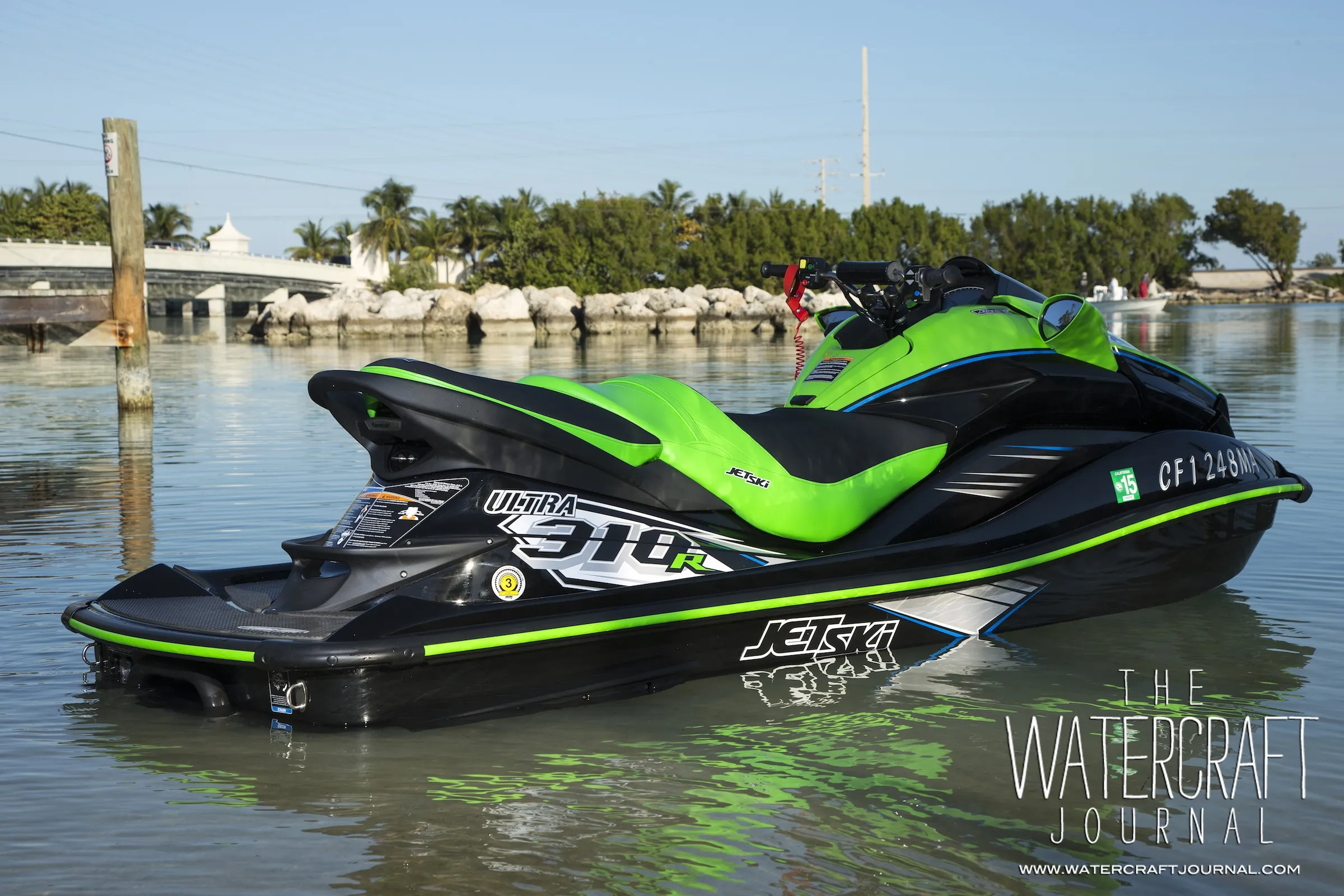
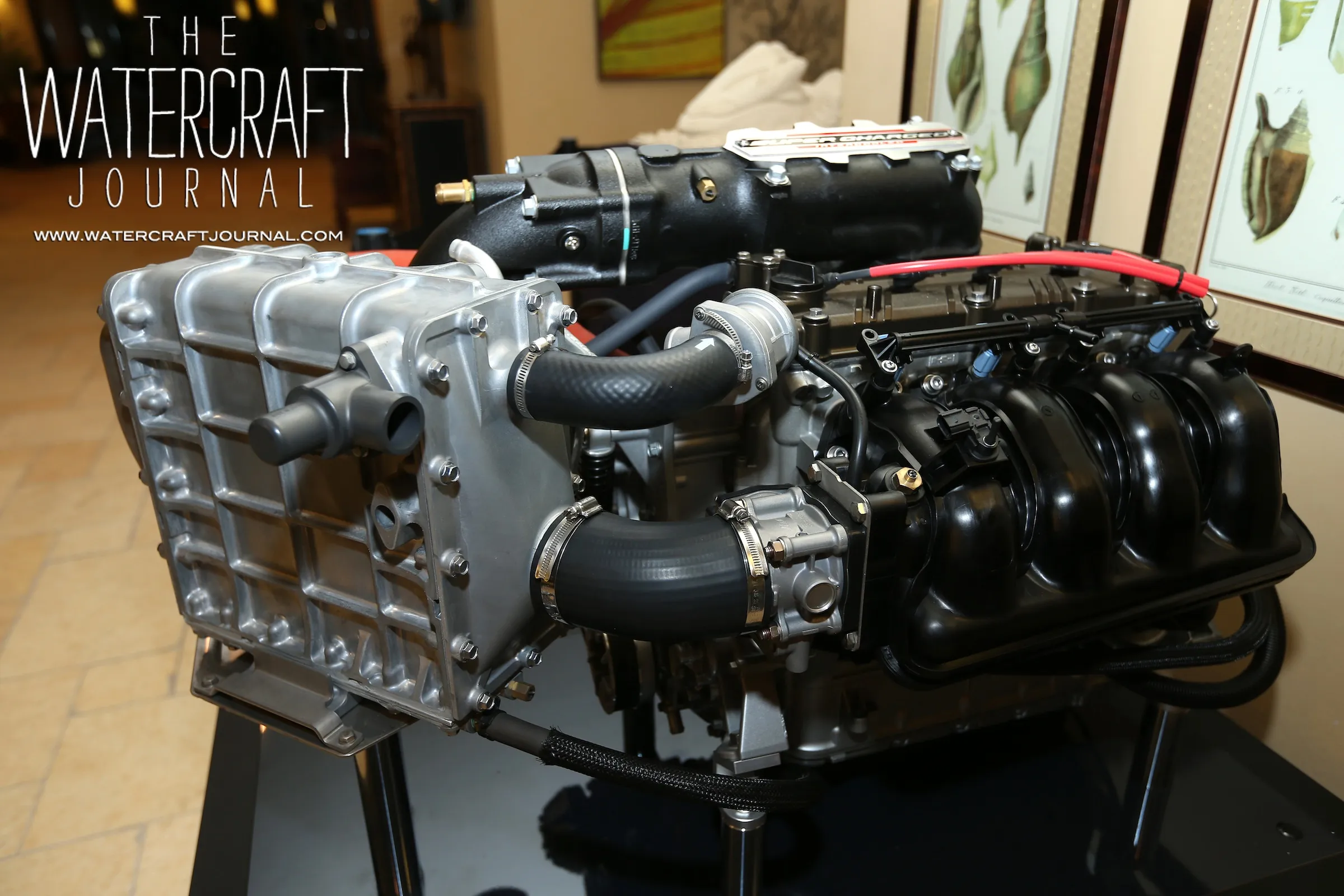
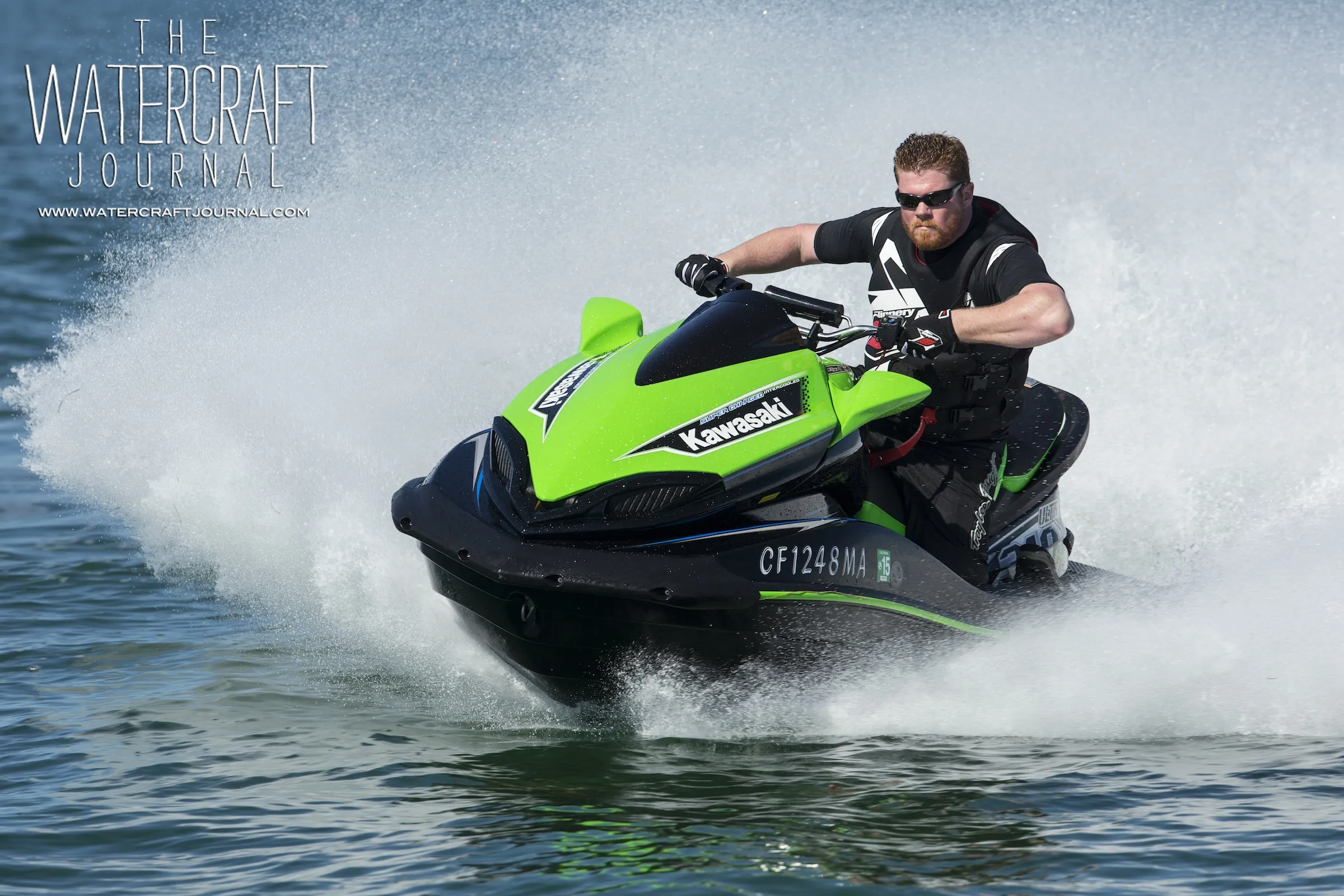
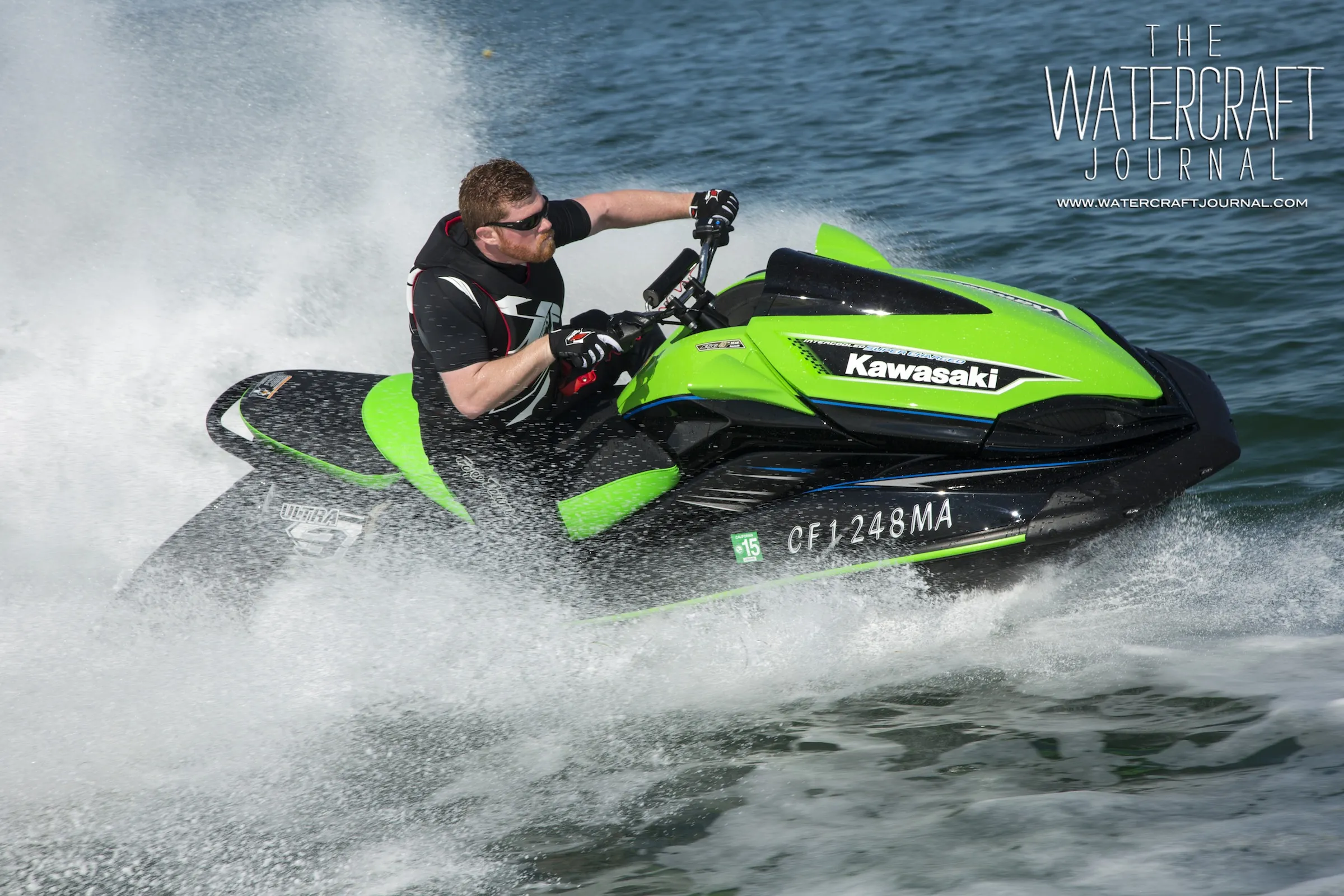
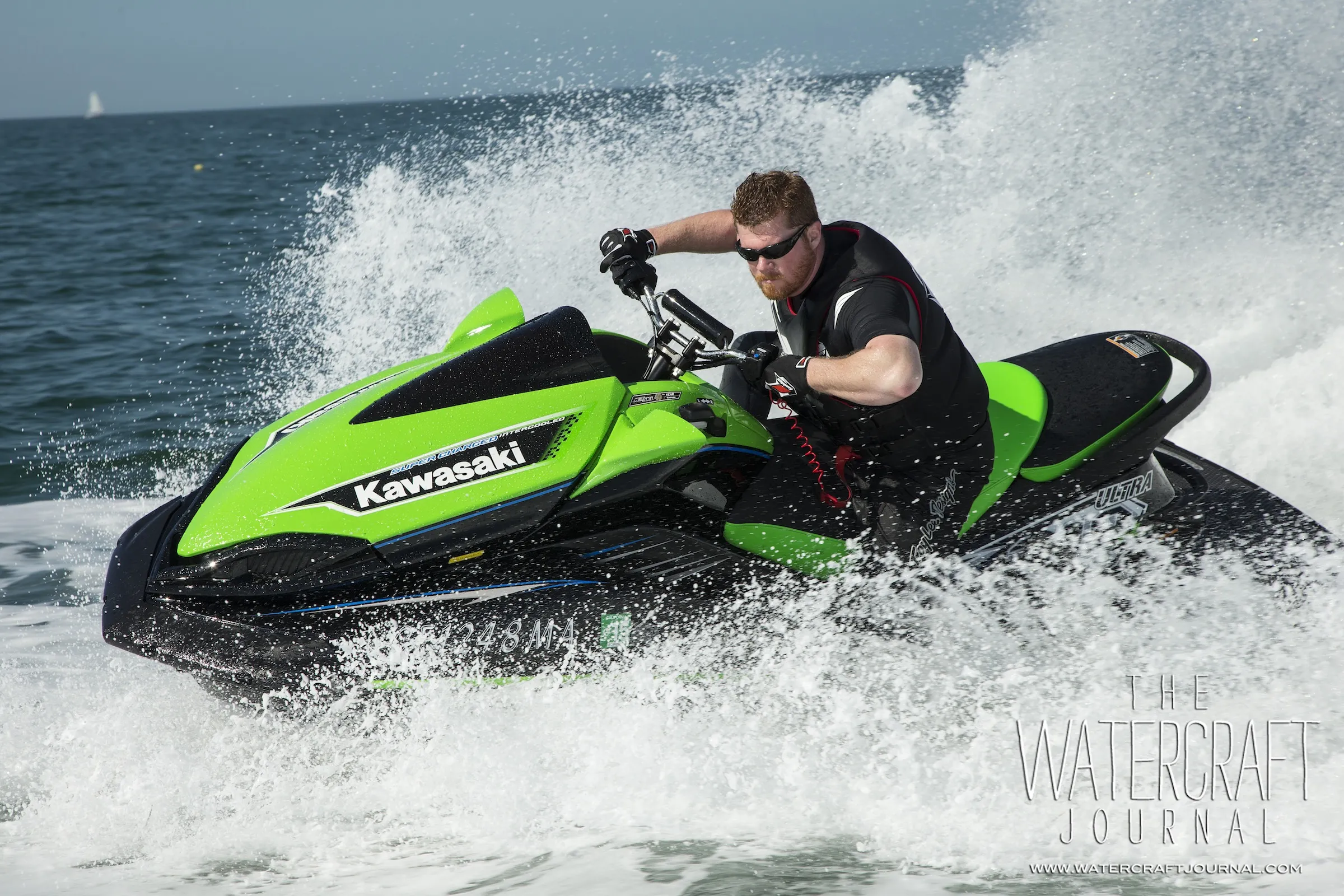




[…] (or LB2CAT for short) as Kawasaki agreed to equip The Watercraft Journal will a brand new 2014 Kawasaki Ultra 310R JetSki for the 56-mile open ocean race. Soon after other manufacturers stepped up to the plate to provide […]
[…] punching out 250 ponies back in 2007. Next was 260 and a square 300 horsepower in 2011. In 2014, Team Green dove into the 300’s 1,496cc supercharged engine and dramatically improved int…. The result was an added 10-horsepower as well as greater […]
[…] four-lobe Eaton TVS (Twin Vortices Supercharger) blown 1,498cc four-stroke was wholly untethered, receiving top-level improvements to engine oiling through larger oil passages for quicker oil return to the redesigned baffled pan that […]
[…] Ultra JetSki – nothing beats the original. In these pages you’ll find reports on the 310R, the 310X Special Edition and the top-of-the-heap 310LX, and you’ll find praise for each of […]